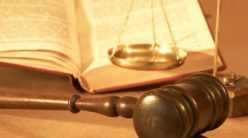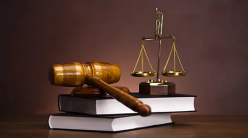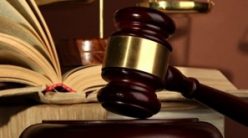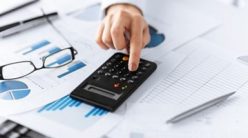GENERAL OPINION ON THE POSITION OF SITTING ONLY, STANDING ONLY IN COURSE SOCIAL SOCIAL
Seat, standing position is not merely the position, location of a person or some certain people, but the seat and standing position also shows their position, role and importance depending on specific circumstances. body.
- In terms of semantics
– Seating: understood in the verb (or verb) meaning of the Vietnamese Dictionary as: “possibly placing the ass on the ground or the legs folded to measure the whole body, distinguishing it from standing and lying”, for example: The chair on the top seat was rudely sitting, the room in the room urged her to kip out” (Truyen Kieu – Nguyen Du). According to the proverb, sitting is understood as: “a place to live, in a certain position, for a relatively long time to do something”, for example, “to sit in a stone house” (in prison) or “to sit in the director’s chair”. etc. Sitting also has many different positions such as: Sitting; sitting tights; sitting with a pillow; sit and drink water; sitting is not warm, etc… [1 – P. 1066] – And standing in the verb sense is “in a straight body position, with only the legs placed on the ground, supporting the whole body, distinguishing it from lying or sitting”. For example: “standing up and sitting down”, “standing”, “standing in line” etc. or in a certain position such as: “head of the agency”, “standing in the list”.etc. there are only many different postures and states [1-P 559].
- Socially
– Seats clearly define different positions and authority in society. For example: “Reign” the place for the king to sit or indicate the highest and most solemn place “Buddha sits on a lotus” etc. [1-P 1079, 1080].
– Position: “determine an important position and role in the family, society or in an organization, a certain scope” For example: “The work has found a place”, “You are now become a person who has a place in society” [1 -275].
Through the specific meanings of seats and positions mentioned above. We see that there is a dialectical relationship between “form and content”. Seats and standing positions are just formalities, but through that we can clearly see the status, role, position, rights and obligations of the person sitting, standing in a specific position in the situation. particular scene of an event.
In fact, we often watch in conferences, meetings, seminars, rallies or congresses of mass organizations in our society today; people must arrange seats and standing positions for each specific title of that meeting in order of position from highest to lowest. Usually the seat of the chairperson of the meeting or the Presidium (Congress, conference, seminar) is always placed in the front center position and is usually higher than other participants in the meeting; Next to it is a podium for those who stand to give speeches, opinions, conference conclusions, etc.
In fact, at present, there is no specific decision on the above-mentioned seats and positions in the meetings….But where to sit is due to the arrangement of the Organizing Committee, so we all know and understand. position and role of each person at those meetings.
Seats and positions in some respects also clearly show the identity of a nation not only in our country but also in other countries around the world. Example: At the Regional Workshop on Responding to Violence Against Children in the Judiciary System organized by UNICEF in Southeast Asia and the Pacific in BANGKOK from 3 to 7 November 2014; In the seminar program, there was time to attend and speak from the Royal Princess of Thailand. When the Princess arrives enter a private gate; The path leading to the conference chair table for the princess was covered with a red carpet, arranged with a painted and gilded chair for the princess to sit on. When she finished speaking and left, the seats and red carpet were stored and moved. Go. When the princess entered the hall as well as when she left, everyone stood up and clapped and waved according to the host country’s rituals. In Australia, when the judge enters the courtroom, everyone has to stand up and say hello; During the trial, anyone entering or exiting the courtroom must stand respectfully and bow to the judge. In Vietnam, everyone in the courtroom only has to get up when the trial panel enters the courtroom or when the sentence is pronounced; During the Court’s trial, only a few people according to the provisions of the Procedural Law must report to the Chairman of the trial for permission, the rest do not move in and out like in Australia.
Obviously, seats and positions at the specific locations mentioned above have a very important meaning in terms of national identity, diplomatic rituals and the position of each specific person.
THE COURT ROOM ORDER MODEL
For a long time, on the mass media, there is often a discussion about judicial culture with the column “Court culture” including from seats to all gestures and words of all participants in the trial according to regulations. provisions of the law, especially those of those conducting the proceedings (Trial Council, representatives of the Procuracy, etc.) are always interested by the masses, the participants in the proceedings and the press.
In short, all developments in the courtroom are carefully considered in terms of both form and content. There are many issues that need to be discussed regarding courtroom operations on both sides. However, within the scope of this seminar, I only mentioned the seating position of the participants in the proceedings and conducting the proceedings in the criminal court.
For court sessions or sessions to settle various types of cases and matters under the jurisdiction of the Court in general, as well as criminal trials in particular, the seating position of the person conducting the proceedings, participating in the proceedings, especially especially, the sitting position of the Trial Council not only clearly shows the power of the State in judicial activities but also fully and deeply reflects the nature of justice of the regime; express both national identity and judicial culture.
After the Law on Organization of the People’s Courts and the Law on Organization of the People’s Procuracy in 1959, up to now, the model of seating positions of those conducting and participating in the proceedings is arranged as follows:
The upper part of the courtroom below the national emblem, in the middle is the Trial Council; The right side in front of the Trial Panel’s table is the sitting position of the Procuracy’s representative, and the left-hand side in front of the Trial Panel’s table is the sitting position of the Court Clerk.
Below the front is the horseshoe (where the defendant stands, or is allowed to sit to testify in Court…); next to, behind the horseshoe, there may be a table to put evidence; tables for witnesses, tables for victims to stand and present their opinions. The two sides of the hall, close to the Trial Panel, the representative of the Procuracy, and the Court Clerk, are the place to arrange for lawyers and defenders of the interests of the participants in the proceedings or for the experts and the hearing persons. translation (if any); Next are the people attending the trial.
In addition, in some cases that are of interest to domestic and foreign press, the Court (specifically the Trial Organizing Committee established by the Court) also arranges rooms for reporters to attend the trial, etc. … However, overseas reporters are not allowed to move freely in the courtroom as in Vietnam; Only take notes of the events at the trial, not take pictures.
In short, the position of the Trial Panel, the representative of the Procuracy, and the Court Clerk have been fixed for a long time, almost as usual, the remaining positions are arranged and arranged by the Court. tailored to the specific conditions of the courtroom.
But in the past time, there have been quite a lot of different opinions about the arrangement and arrangement of seats of the procedure-conducting persons and participants in the proceedings, especially the correlation between the seats of the representative and the court. Representative of the Procurator and Lawyer.
The problem is, it is necessary to arrange seats that reflect the nature of trial activities in the criminal court. Because, the arrangement of seats for people conducting proceedings as well as participating in legal proceedings is not only about form but also reflects the nature of law enforcement agencies and the cultural identity of the nation as well. as judicial culture.
Therefore, we believe that it is necessary to legislate the trial organization model, first of all, the arrangement of seats, the attire of the procedure-conducting persons, the seats of the participants in the proceedings…; ending the long-standing controversy, as well as answering the proposal of the Vietnam Bar Federation to the Leaders of the National Assembly, the Government, the Supreme People’s Court, and the Supreme People’s Procuracy on the arrangement of seats. the lawyer’s seat at the trial.
Currently, according to Article 252 of the Draft Criminal Procedure Code, chaired by the Supreme People’s Procuracy, the Supreme People’s Procuracy amends and supplements the regulations on seating in the criminal courtroom as follows: “The upper part of the courtroom. The judgment includes the sitting positions of the Trial Panel, the Procurator and the Court Clerk; The trial panel sits in the middle, the procurator sits on the right, the secretary sits on the left of the trial panel. The lower part of the courtroom includes the positions of the participants in the proceedings and the participants in the trial. The adjudicator sits on the left, the expert sits on the right of the Trial Panel…”.
In our opinion, if Article 252 of the Draft Criminal Procedure Code is passed by the National Assembly, it is still unclear, so there is still a need for specific guidelines for implementation. Because there is a trial with a large number of participants (many lawyers defending different participants), many defendants, many victims, interpreters, experts, etc… Therefore, The arrangement for these persons to sit in any position shall be arranged by the Court, arranged to create favorable conditions for them to participate in the court hearing and ensure the court order. So the Supreme People’s Court or the Supreme People’s Procuracy will guide the implementation of this Law?
As mentioned above, citizens in remote areas have limited awareness of the law. However, in terms of customs and habits, they keep them very well, less prone to hybridization and mixing. Therefore, when entering the courtroom, according to their perception when observing the sitting position as in the draft above, it is easy for them to mistakenly believe that the representative of the Procuracy and the clerk of the trial have the same important position. should have the same sitting position, except that the Trial Panel has a more important position than sitting in the middle. But in fact, the position and legal status as prescribed by law of the Procurator and the Court Clerk are very different, even though they are the same person conducting the proceedings.
As for the lawyers, as well as legal experts, they are of the same opinion that: the defense (lawyer) must sit on an equal footing with the representative of the Procuracy to show the nature of criminal case trial activities; reflects civility, equality before the law, equality before the Court in the performance of each party’s duties (accusation, acquittal).
On the contrary, the Procuracy and those who agree with the Procuracy’s point of view believe that: The Procuracy on behalf of the State not only holds the right to prosecute in criminal trials but also performs the function of supervising the compliance with the law. According to the law in adjudication activities, it is not possible to sit on an equal footing with the defense counsel (Lawyer) who is a participant in the proceedings and there are many other reasons not to sit on an equal footing with each other.
There is a saying: “All comparisons are lame”. However, where to sit at the trial needs to be clarified to ensure the principle: “Everyone is equal before the Court”.
In fact, for a long time, in addition to the fixed positions of the Trial Council, the representative of the Procuracy and the Court Clerk, the remaining seats at the trial were arranged and arranged by the Court.
Furthermore, when there is a trial, in addition to the Trial Panel, there will be an alternate judge and two Court Clerks to participate in the trial; there is an alternate representative of the Procuracy; there are many defense counsels protecting the rights of the accused and many other participants in the proceedings. It is no coincidence that the law stipulates a particularly important position of the Trial Panel (Judge – Presiding Judge) in adjudicating activities. The presiding judge is a judge on the panel that directs and maintains the discipline of the trial.
The term presiding judge has been defined in previous legal documents. According to Ordinance No. 13 of January 24, 1946 on organization of courts and ranks of judges, the first-instance court has only one judge, the second-level court when adjudicating minor matters other than the Chief Justice as the presiding judge. The court hearing also has two more people’s assistants. When conducting a felony trial, the Trial Panel has 5 people, including the Chief Justice as the presiding judge, two judges as the specialist and two people’s assistants. The High Court has the Chief Justice as the presiding judge, two judges as jurors and two people’s jurors.
According to Decree No. 163 of August 23, 1946 on the organization of the Provisional Military Court, the Trial Panel of the Court consists of the Chief Justice as the presiding judge and two jurors, one of which is the judge, the other is the judge. The jurors are military.
The Law on Organization of People’s Courts dated July 14, 1960 stipulates that the Trial Panel is composed of one judge and two people’s jurors. In the case of small, simple and unimportant cases, the People’s Court shall people can try without a people’s jurors; The trial panel of the Supreme People’s Court is composed of three or two judges who are chaired by the chief judge or appoint one judge to preside over the court session.
Inheriting previous legal documents, the former Criminal Procedure Code of 1988 and the Criminal Procedure Code of 2003 clearly defined the composition of the Trial Panel at different trial levels; clearly define the particularly important position and powers of the presiding judge in adjudication activities.
The presiding judge of the court session has the right and responsibility to direct the court session to proceed in accordance with the order and procedures prescribed by law and to strictly maintain the court’s discipline. Everyone in the courtroom must maintain order and follow the direction of the presiding judge. For those who violate the court order, depending on the case, the presiding judge may warn, impose a fine or be forced to leave the courtroom; Serious violations may result in arrest.
Thus, according to the provisions of law, the Trial Panel in the name of the State shall exercise judicial power and decide to pronounce a person guilty or not guilty; decide on penalties, compel compensation for damage subject to court costs, etc., depending on each specific case as prescribed by law.
Representatives of the Procuracy, the Court Clerk, procedure participants and all court participants present in the courtroom must abide by the court’s rules and obey the instructions of the presiding judge during the hearing. case resolution process.
The proposal of the representative of the Procuracy, the defense counsel, as well as other participants in the proceedings may be accepted or not accepted by the Trial Panel (Court).
The presiding judge of the court session shall act for the representative of the Procuracy to argue with the defense counsel, as well as other procedure participants who have the right to argue at the court hearing. Thus, temporarily putting aside the other functions and tasks assigned by the Law to the People’s Procuracy, the procedural conduct of the representative of the Procuracy at the trial is at a specific angle compared to the role and position of the guarantor. defense (Attorney) at the trial are equal to each other and equal before the Court. Moreover, according to the current draft Criminal Procedure Code, at the trial, the Procuracy only performs the function of prosecution, not the function of supervising adjudication activities.
Therefore, it is suggested by lawyers and jurists that the sitting positions of the representatives of the Procuracy (prosecutor) and the defense (defeated) in the criminal courtroom at the Court are equal. to show civility and equality before the court in adjudicating activities at the trial is not without practical and scientific grounds. In fact, when adjudicating criminal cases, especially cases where victims are not only damaged in terms of health, life and property, the frustrations and reactions of victims and their relatives ; even the anger of the court attendees can flare up at any time during the settlement of the case. Many times, when quarrels and scuffles arise between the victim, the accused or even witnesses with conflicting interests between the parties, it requires the control of the presiding judge of the court session so that the police can protect the hearing. The court has the duty to maintain order in the trial. In the above-mentioned complicated cases, when adjudicating the Court (Trial Council) has planned to arrange seats for the participants in the trial, in order to ensure the order of the trial and to ensure equality. before the court and to prevent conflicts between parties with different rights and obligations that may arise in the courtroom.
The trial room is a working room managed by the Court; The arrangement of seats for the person conducting or participating in the proceedings has been decided by the Court. The fact that the People’s Court of Da Nang City pioneered the arrangement of seats for those conducting and participating in the proceedings in the courtroom in the direction of improving the quality of litigation in the spirit of judicial reform: The court clerk shall be placed directly below the sitting position of the Trial Panel; The table set for Lawyers is placed on the same level as the table for the representative of the Procuracy, although there are opinions, different opinions, and even objections, but it is also necessary to acknowledge and fact the Prosecutor, the participants Other proceedings have been summoned and announced to attend the trial to sit in their respective positions as arranged by the Court and the trial is still proceeding in accordance with the legal order, and at the same time, many people agree and support. this innovation.
Moreover, in fact, a number of times we directly participated in the mobile trial at the detention camp, the arrangement model and seating arrangement are usually arranged as follows: The jury sits in the middle, in front of both sides are tables. for the representative of the Procuracy, the Court Clerk and a table in front of the trial panel is the table for the defendants to stand to testify; next to the bottom right is the table for the victim to present… on the same plane, neither high nor low. The order of the trial is still conducted in accordance with the legal procedures, which does not change the effectiveness of the Procuracy Representative’s performance of duties at the trial and creates a positive mentality for the defense to argue with the representative. representative of the Procuracy on the case.
On the other hand, the arrangement of seats for the persons conducting and participating in the proceedings of the People’s Court of Da Nang city is also consistent with the arrangement of seats for those conducting and participating in the proceedings. in many other countries around the world, for example in the United States, Australia, Canada, Japan, China, Russian Federation, Romania…
Currently, according to the provisions of Clause 1, Article 102 of the 2013 Constitution, the People’s Court is the adjudicating body of the Socialist Republic of Vietnam; The only agency exercising judicial power of the Socialist Republic of Vietnam.
Resolution No. 49-NQ/TW dated June 2, 2005 on the strategy of judicial reform, the Politburo stated clearly the tasks of judicial reform, in which the important task is to : clearly define the functions, tasks, authority and improve the organization and operation of the People’s Court” . The Law on Organization of People’s Courts 2014 has specific provisions of the Constitution and Resolution No. 49-NQ/TW mentioned above of the Politburo. However, in order to perform their functions and duties in adjudication activities, the Procedural Codes, in which the Criminal Procedure Code need to be amended and supplemented to suit the new provisions of the Constitution and the Law on Organization. the People’s Court on the position and functions of the People’s Court.
On the other hand, Joint Circular No. 01/2011/TTLT dated July 12, 2011 sent to the TANDTC – Ministry of Public Security – Ministry of Justice – Ministry of Labor, War Invalids and Social Affairs guiding the implementation of a number of provisions of the Code The criminal procedure for juvenile procedure participants in Clause 3, Article 11 clearly states: “When conducting the trial, the Court may rearrange the positions of the procedure-conducting persons. , procedure participants in the courtroom in order to reduce feelings of stress and fear towards juveniles”.
That clearly demonstrates the implementation of the Party and State’s policies and guidelines as well as the implementation of the International Convention on Child Protection to which our State has joined.
In summary, on the basis of practice as well as the provisions of the current law, implementing the policy of judicial reform under the direction of the Party and the State, we believe that the arrangement of seats for those conducting proceedings and participate in the proceedings, as well as those who attend the trial in the courtroom, should be assigned to the Court to perform the most appropriate in all respects. On that basis, we propose to amend and supplement Article 252 of the Draft Criminal Procedure Code, amending and supplementing as follows: “In terms of the form of the trial, the Trial panel sits in the middle, the The remaining positions are assigned to the People’s Court to assume the prime responsibility for coordinating with relevant agencies in regulations.
We believe that only the Supreme People’s Court presides over the guidance on stipulating the seating positions in the courtroom in accordance with the trial practice during the past time as well as the position prescribed by law for the court. The court is the body that exercises judicial power.
After the revised Criminal Procedure Code takes effect, the People’s Court of Vietnam has the responsibility to coordinate with the People’s Procuracy, the Ministry of Public Security, the Ministry of Justice, the Ministry of Labor, Invalids and Social Affairs and relevant agencies and units in guiding the direction. specific and consistent guidance in the court system at all levels to meet current judicial reform needs, including a juvenile-friendly justice system; As well as arranging seats in civil and administrative court sessions…, meeting rooms handle all kinds of matters according to the functions and jurisdiction of the court in accordance with the provisions of law and specific participants. trial, session.
Regarding the term “procuracy’s representatives” who were previously identified as “representatives of the procuracy” at the court hearing, now it is proposed to use the phrase “prosecutor representatives” to clarify the duties and functions of the procurator at the hearing. court.
Source: According to tapchitoaan.com
For support and advice on Business, Investment, Intellectual Property, Tax, etc. issues, in the best way, please contact us with the following information:
DHP LAW
Address: L4-09.OT06 Landmark 4 Building Vinhomes Central Park, 720A Dien Bien Phu, Ward 22, Binh Thanh District, Ho Chi Minh City









